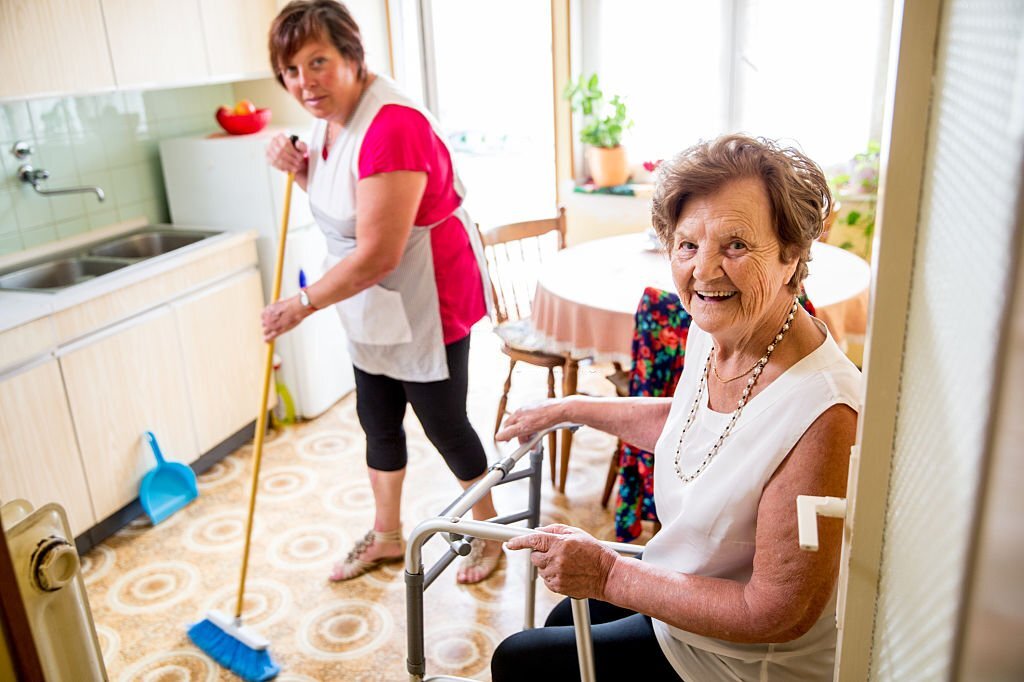For seniors, orthopedic health is crucial to their all-around physical fitness and happiness. Everything related to the human skeleton, muscles, joints, and connective tissues is considered part of orthopedics. Orthopedic health has an outsized effect on the quality of life for the elderly beyond its contributions to general physical health.
A simple and seemingly innocuous event like slipping on the ice and breaking a hip may cause severe pain and, in some cases, increase the likelihood of dying and devastatingly affect mobility, socializing, and overall enjoyment.
Maintaining ideal muscle, bone, and joint health in older people is essential for these and other reasons. Following are 9 ways to improve orthopedic health for seniors!
Healthy Habits
Adopting a healthy lifestyle can help you maintain good orthopedic health; habits like sitting straight, with the shoulders back and a straight spine, add to it. To maintain weight adequately, you should always keep your feet on the ground.
Avoid carrying anything heavy over one shoulder to reduce stress on your back and shoulders. Sleep with a couple of pillows for support, and position yourself so that your spine may naturally curve.
Another strategy to ensure that your bones, which are essential to orthopedic health, remain strong and healthy is to consume the right quantities of vitamins and minerals. For example, calcium consumption from food has been discovered to be crucial for developing and maintaining bone strength. Calcium is also necessary for your muscles to operate properly.
In a similar vein, vitamin D is crucial for maintaining healthy bones. It helps absorb and retain calcium from our foods by the bone tissue, maintaining healthy bones. This explains why vitamin D is added to many loaves of bread, pasta, cereals, and milk products. Okra, kale, spinach, collard greens, and fatty salmon are among the natural sources of vitamin D.
It is beneficial to keep track of your nutritional consumption for about a week and discuss the findings with your doctor or a licensed dietitian. A mix of nutritious foods, such as fruits, vegetables, grains, dairy, nuts, seafood, and limited quantities of meats and added fats, may often satisfy a person’s nutritional requirements.
Advise Your Doctor or Licensed Dietary to Consider Supplements
Your doctor or dietician may suggest taking a supplement to make up for the deficit if they review your food diary and find that you are lacking in any essential nutrients. Vitamin D intake must be appropriate for bone health. Exposure to sunlight may provide vitamin D in many parts of the globe. However, many people in the northern hemisphere do not receive enough sun. Therefore, it could be wise to intake vitamin D supplements orally.
Even if they weren’t prescribed or recommended by your doctor, it’s a good idea to let your doctor know about any nutritional supplements you’ve been taking at your routine visits. This is crucial if you currently take medication since many dietary supplements might interact poorly with common medicines used by the elderly.
Improve Your Physical Strength
Strength training is essential for the general improvement of seniors’ orthopedic health. Conclusively, muscle weakness is a significant independent predictor of mortality risk in those over 65. Since we lose between 5 and 10 percent of our muscle mass each year beyond 30, increasing muscle mass and core strength might help seniors maintain their health, mobility, and activity levels into old age.
However, substantial weight training is not required to gain and keep muscle. Bodyweight exercises, swimming, and even gardening may all aid in developing and maintaining muscle mass and strength.
Regular Exercise
Having strong muscles is crucial for both orthopedic and general well-being. Muscle gain is essential to orthopedic health, but exercise also provides other advantages, such as increased mobility. Regular walking is one of the best things seniors can do to keep their mobility for as long as possible into old age.
This might consist of anything as simple as doing the same thing every day, like getting a newspaper from the shop on the way home from work. It shouldn’t be more challenging than it has to be.
Non-weight-bearing activities, such as swimming or aquatic fitness programs, may be helpful for many elderly people who have joint discomfort. Never start a new fitness regimen without first talking to your doctor, no matter what kind of exercise you plan to perform.
Stretching Out
Regularly stretching is crucial for minimizing performance-reducing ailments like sprains and strains. Before doing any hard lifting or high-impact aerobics, you should always warm up gently and then cool down with more static stretches.
Such flexibility exercises may prevent injuries to your muscles and joints. It’s essential to take the time to warm up before pushing ourselves since, as we age, our joints may become less resilient.
Carefully Use a Cane or Walker
Many people find that using a cane, walker, or other mobility equipment helps their overall orthopedic health. These mobility aids have a dual purpose: they save you from falling and ensure you don’t overuse an injured or weakened limb while walking.
However, misalignment, abuse, or an improper fit for your body might increase the risk of injury while using these devices. Fitting your device by a physical therapist is crucial in avoiding these complications. Your physical therapist will instruct you on using your cane or walker properly. This may seem obvious, but there are optimal methods to utilize a cane while going up and down stairs, for example. A competent teacher might be of great assistance in this regard.
Clothes & Footwear
Wearing clothes that put unnecessary strain on your muscles and bones is never a good idea. Don’t put yourself through extreme discomfort by donning constricting clothing or painful footwear. Wearing shoes that are too small might restrict blood flow and reduce muscular pliability, so choose a pair that fits well without being too loose.
Get Regular Checkups
It is essential to see your doctor regularly, no matter your age. This is especially true for seniors who often manage various health issues and medicines.
Be careful to tell your doctor about any new or bothersome symptoms, including aches and pains in your muscles, bones, or joints, at your regular checkups. Your doctor may request further tests to rule out a sudden illness or injury and determine whether you need more pain medication due to a persistent ailment or surgical treatment like a hip replacement.
Prevent Falling
Preventing falls is one of the most important things a senior can do to ensure a long, healthy life free of accidents. Most falls happen in the home setting, so it makes sense to start preventing them there. Install shower handles and handholds so that you have something to grip onto and can avoid falling in the bathroom. Using a non-slip bath mat and a shower seat will help reduce your risk of falling in the bathroom even more.
Small, non-slip decorative carpets are a common choice for interior decorating in many homes. To minimize falls, you should get rid of these carpets as part of your home makeover since they provide a tripping risk. A clean, clutter-free home must also have well-lit hallways.





